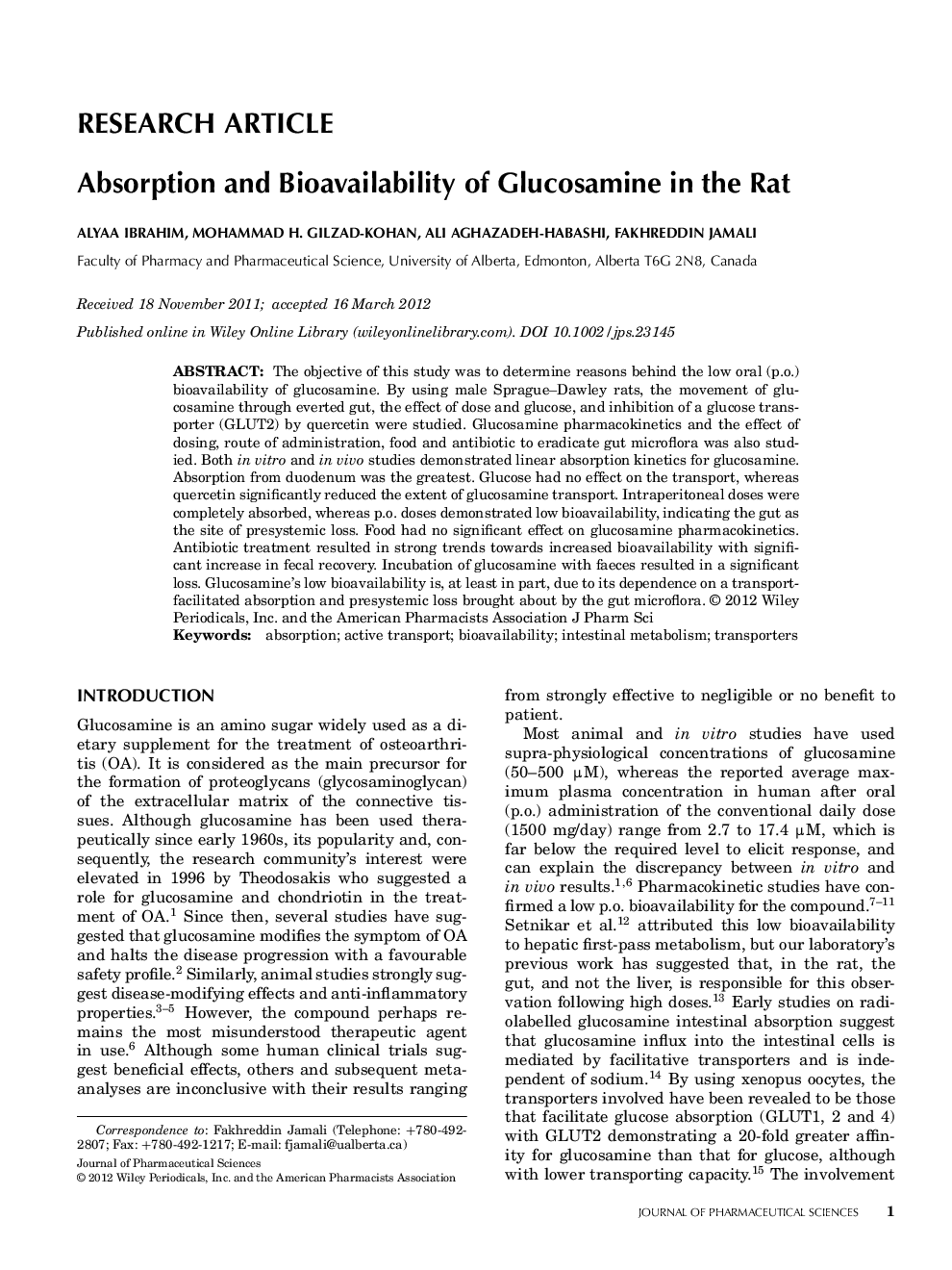| Article ID | Journal | Published Year | Pages | File Type |
|---|---|---|---|---|
| 2485081 | Journal of Pharmaceutical Sciences | 2012 | 10 Pages |
Abstract
The objective of this study was to determine reasons behind the low oral (p.o.) bioavailability of glucosamine. By using male Sprague-Dawley rats, the movement of glucosamine through everted gut, the effect of dose and glucose, and inhibition of a glucose transporter (GLUT2) by quercetin were studied. Glucosamine pharmacokinetics and the effect of dosing, route of administration, food and antibiotic to eradicate gut microflora was also studied. Both in vitro and in vivo studies demonstrated linear absorption kinetics for glucosamine. Absorption from duodenum was the greatest. Glucose had no effect on the transport, whereas quercetin significantly reduced the extent of glucosamine transport. Intraperitoneal doses were completely absorbed, whereas p.o. doses demonstrated low bioavailability, indicating the gut as the site of presystemic loss. Food had no significant effect on glucosamine pharmacokinetics. Antibiotic treatment resulted in strong trends towards increased bioavailability with significant increase in fecal recovery. Incubation of glucosamine with faeces resulted in a significant loss. Glucosamine's low bioavailability is, at least in part, due to its dependence on a transport-facilitated absorption and presystemic loss brought about by the gut microflora. © 2012 Wiley Periodicals, Inc. and the American Pharmacists Association.
Related Topics
Health Sciences
Pharmacology, Toxicology and Pharmaceutical Science
Drug Discovery
Authors
Alyaa Ibrahim, Mohammad H. Gilzad-kohan, Ali Aghazadeh-Habashi, Fakhreddin Jamali,
